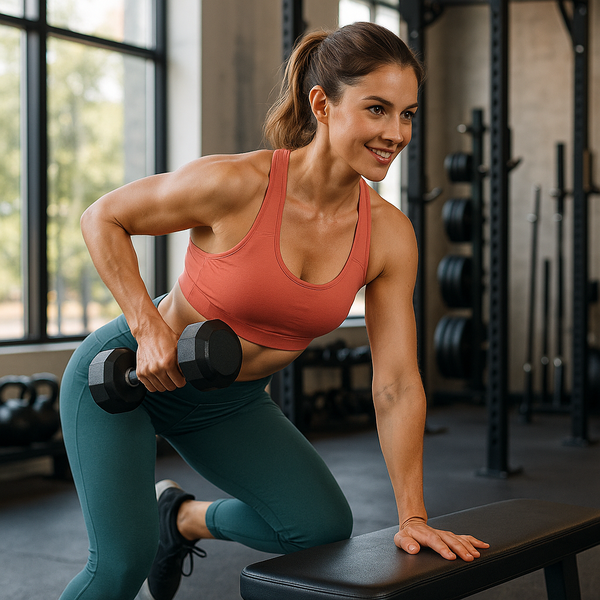
Embarking on a fitness journey requires dedication, but knowing where to start can be half the battle. Effective workout routines are the cornerstone of achieving your health and fitness goals, whether you aim to build muscle, lose weight, improve endurance, or simply enhance your overall well-being. Understanding the principles behind successful training programs is key to seeing real, sustainable results and staying motivated along the way.
The Importance of Effective Training
Simply moving your body is good, but having an effective workout routine is significantly better. An effective routine is one that is tailored to your specific goals, fitness level, and available resources (like time, equipment, and location). It includes a balance of different types of exercises, incorporates principles of progression, and allows for adequate rest and recovery. Without effectiveness, you risk wasting time, getting injured, or becoming discouraged by a lack of progress. Effective routines maximize the return on your effort, making every sweat session count towards reaching your desired outcome.
Components of a Balanced Routine
A truly effective workout routine typically includes several key components to ensure comprehensive physical development. Strength training builds muscle and bone density, crucial for metabolism and injury prevention. Cardiovascular exercise improves heart health and endurance. Flexibility and mobility work enhance range of motion and reduce stiffness. A balanced routine integrates these elements appropriately. The exact mix depends on your goals; someone focused on marathon training will prioritize cardio differently than someone aiming for significant muscle gain. However, neglecting any area can lead to imbalances and limit overall effectiveness.
Designing Your Effective Workout Plan
Creating your own effective routine starts with setting clear, measurable goals. Do you want to run a 5k, lift a certain weight, or lose a specific amount of weight? Your goals will dictate the structure and focus of your plan. Next, assess your current fitness level. Are you a beginner, intermediate, or advanced exerciser? This helps determine the intensity and volume you should start with. Consider your available time per week and the equipment or space you have access to. A home workout routine will look different from a gym-based plan.
Types of Effective Workouts
Exploring various workout types can help you find what works best for you and keep your routine engaging. High-Intensity Interval Training (HIIT) is excellent for burning calories and improving cardiovascular fitness in short bursts. Strength training can involve weights (free weights or machines), bodyweight exercises, or resistance bands. Yoga and Pilates focus on core strength, flexibility, and mindfulness. Endurance activities like running, cycling, or swimming are vital for cardiovascular health. Combining different types prevents plateaus and provides a well-rounded fitness experience.
Progression is Key to Continued Effectiveness
Your body adapts to stress, so for a routine to remain effective, it must evolve. This is the principle of progressive overload. As you get stronger or fitter, you need to gradually increase the challenge. This could mean lifting heavier weights, doing more repetitions, increasing the duration of cardio, reducing rest periods, or trying more complex exercises. Without progression, your body stops adapting, and your progress will stall. Regularly reassessing your fitness level and adjusting your routine accordingly is crucial for long-term success.
The Role of Consistency and Adherence
Even the most scientifically designed workout routine is ineffective if you don't stick to it. Consistency is paramount. Aim to schedule your workouts like any other important appointment and make them a non-negotiable part of your week. Finding activities you enjoy can significantly boost adherence. Don't be afraid to modify your routine if life gets busy; a shorter workout is always better than no workout. Tracking your progress can also be highly motivating, showing you how far you've come and reinforcing the effectiveness of your efforts.
Rest, Recovery, and Nutrition
An effective workout routine doesn't end when you finish your last rep or stride. Rest and recovery are just as important as the exercise itself. Muscles grow and repair during rest periods, not during the workout. Ensure you get enough sleep and incorporate rest days into your weekly schedule. Active recovery, like light walking or stretching, can also be beneficial. Proper nutrition fuels your body for workouts and aids recovery. Eating a balanced diet with sufficient protein, carbohydrates, and healthy fats is essential to support your fitness goals and maximize the effectiveness of your training.
Listening to Your Body
While pushing your limits is part of progression, it's vital to listen to your body. Pain is a signal that something is wrong. Learn to distinguish between muscle soreness and injury pain. Don't be afraid to take extra rest days if needed or modify exercises that cause discomfort. Consulting with a fitness professional, like a certified personal trainer or physical therapist, can provide personalized guidance and help you design or adjust a routine that is safe and effective for your individual needs and limitations.
Creating and following an effective workout routine is a dynamic process. It requires setting goals, planning, consistent effort, adaptation, and prioritizing recovery. By understanding these principles and tailoring your approach, you can build a sustainable fitness plan that not only helps you achieve your desired physical changes but also enhances your overall health and vitality. Start small, stay consistent, and celebrate your progress along the way.

